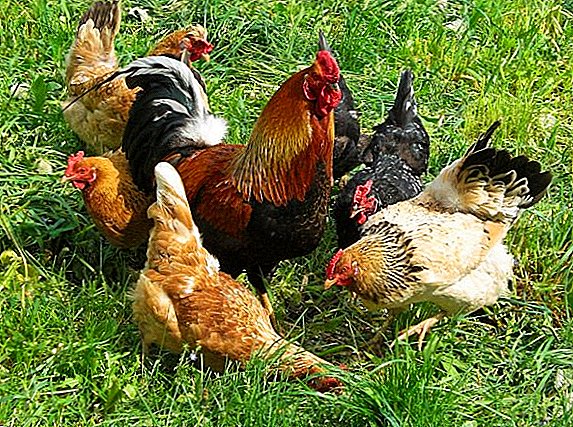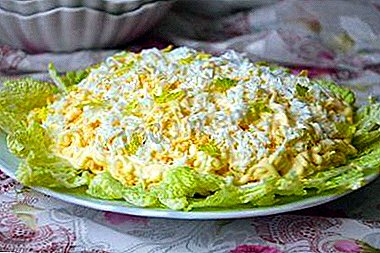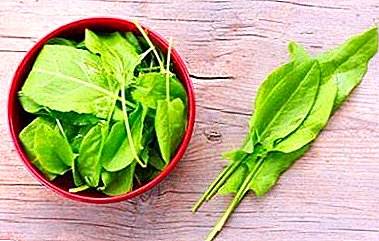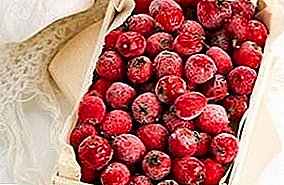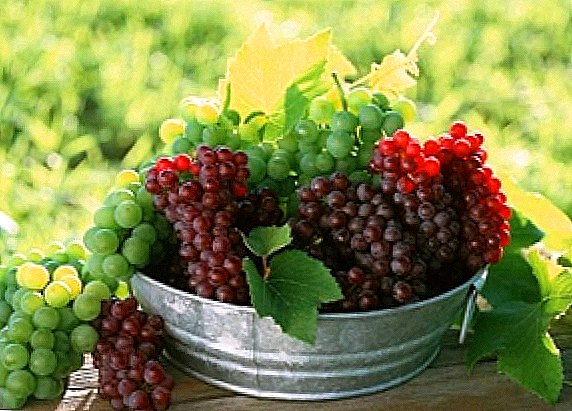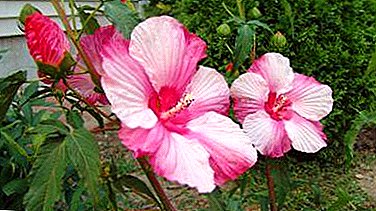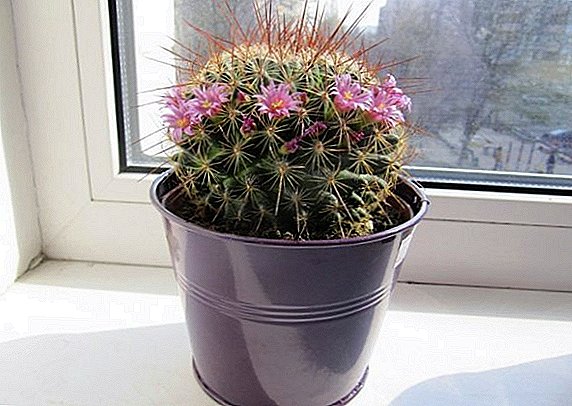 It is unlikely that it will be possible to describe all the species of cacti existing in the world in one topic - there are about 5,000 species, so this material only considers the most interesting ones for home collections, outlines botanical characteristics and rules for care and cultivation.
It is unlikely that it will be possible to describe all the species of cacti existing in the world in one topic - there are about 5,000 species, so this material only considers the most interesting ones for home collections, outlines botanical characteristics and rules for care and cultivation.
Botanical description and species
The Greek word "cactus" was previously used to refer to unfamiliar plants. Now they call it the numerous family of flora. And flower growers associate the word with a prickly “miracle” that amazes with a variety of shapes, colors and types.
It is difficult for a novice florist-cactus player to wade through complex scientific terms and hard-to-pronounce names. But if you decide to seriously engage in the cultivation of cacti, you have to learn at least the general information and the names of these unusual plants, their botanical characteristics.
Did you know? All cacti are succulents, but not all succulents are cacti. The difference lies in the presence of spines, which replace the cacti leaves.
Cacti - conquerors of extreme landscapes. They can be trees, and bushes, and grasses. Also striking are their differences in size - from 2 cm to 20 m in height and weighing over 3 tons, when fully saturated with moisture. Where other plants lost the battle with natural conditions, cacti emerged victorious, managing to adapt to:
- dry and wet forests;
- grassy plains;
- mountain ranges;
- the wilderness.
All cacti are succulents, i.e. they are able to store moisture during a long drought. But the main difference of this family is the presence of the areola - the lateral branches in the form of a bud, from which spikes, flowers and young shoots grow. 
The cactus must know the features of the structure, because cacti are very different from other plants:
- The roots - the powerful branched system for collecting and preservation of moisture. It can reach 7 m in depth and branch from a surface of 5-7 cm, occupying an area of up to 5 m² around the plant. Some species develop aerial roots, which allows you to attach to the trunks of other plants and collect moisture from the air. There are also cutting roots that pull the stem into the soil, protecting it from overheating.
- Stem - this is what is commonly called cactus. The stem is so distinctive and unusual that it is impossible to confuse a cactus with other plants. The presence of more than 5000 species and provides a variety of forms and sizes of the stem - the height varies from 1 cm to 20 m, diameter - from 0.5 cm to 1.5 m. This is a perennial, which only some species can die under adverse conditions. Depending on the stem, tree cacti are distinguished, pillar-like, bush-shaped, lian-like, spherical, with creeping stems. Initially, a single stalk, but over time, side shoots may appear. The stem is devoid of flat surface. Its structure is the edges (from 1 to 100), bumps and nipples. The stem coating has a durable wax sheath that prevents moisture from evaporating. The presence of tufts of fibers and needles on the surface contributes to the accumulation of moisture from the atmosphere and morning fog, and create relative penumbra. The color of the stem is in colors ranging from light green to brown tones.

- Sheet - leaves, having changed beyond recognition, the plant are spines. In some species, one can find saved leaf plates, and in some they are formed only in the initial stage and then die off. As well as the stems, the leaves-thornes amaze with their variety of colors (yellowish, white, greyish, red, red-brown) and shapes (notched, hair-like, feathers, spines and bristles, needle-shaped and fancifully curved). The spines are located in the center of the areola (the strongest and prickly, up to 25 cm long) and along the edge of the areole (softer, smaller and numerous). With this form of a small leaf-thorn, evaporation of moisture is reduced, it also serves as protection from animals that are not averse to feast on the fresh and fleshy flesh of the stem.
- Flowers and fruits - Cactus bloom is considered a miracle and will not leave anyone indifferent. Flowers, usually single, appear directly from the stem or in special zones (cephals). Flowering can be night or day, with a scent or odorless. The size of colors - from tiny, in a few mm, to 40 cm. The shape of flowers - from wide open to close, in the color scheme it is easier to specify which tones do not exist - blue and black. Fruits differ in no less variety - from juicy soft berries, which are used in food, to dry seed pods.
Important! The smallest jagged spines - glochidia give the cactus an elegant look. But do not touch this beauty! It glochidia terribly and painfully prickly.
In the botanical classification, cacti are divided into four groups:
- Pereskievye (Pereskioideae) - intermediate between cacti and deciduous plants. It has the form of a shrub with leafy plates, in the axils of which spines grow, helping the plant to cling to the trees. These spines and flowers are the same as those of other cacti, but the stems are not succulent, but like those of deciduous trees and shrubs.
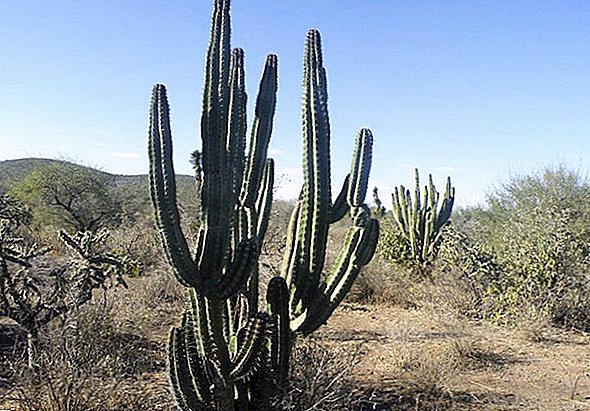
- Opuntia (Opuntioideae) - are distinguished by the presence of rudimentary leaves on young shoots, succulent stems and very sharp jagged spines (glochidia). All plants of this group have similar flowers and rather large seeds.

- Mauh-en (Maihuenioideae) - The area of distribution - exclusively Patagonia (southern Argentina). Like opuntia leaves, they have rudimentary round leaves of conical shape, but do not have glochidia. The stem has papillae tubercles 10-50 cm wide. Young shoots resemble sprouting of deciduous plants. Carbon monoxide absorption occurs during the day, like in Opuntsevs. This family is relatively new in the botanical classification and is represented by only a few species.
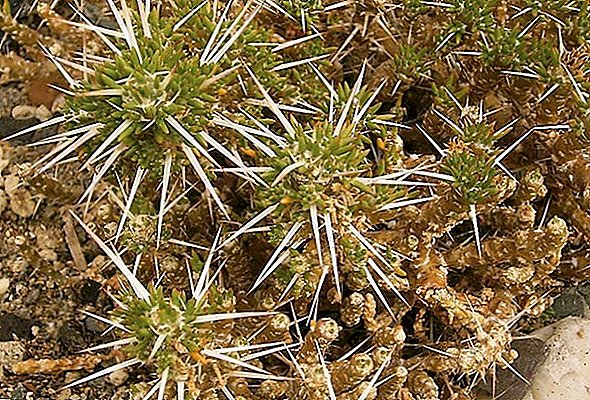
- Cactus (Cactoideae) - all the remaining, fairly numerous cacti genus, are united in this group. The plants of the group have no leaves in any form (except on the flower tube), no glochidia. Young shoots have the form of a ball or cylinder. Stems in the form of flat lashes, spherical, in the form of columns or creeping along the soil surface. This family includes the most varieties grown in home collections.
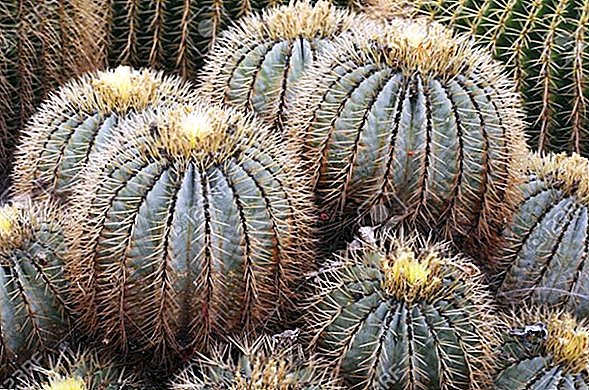
Most often for growing at home use the following types:
- Astrophytum (Star Cactus) - has a spherical or star-shaped stem, the ribs (5-10 pieces) are covered with light thick hairs, it blooms with large yellow flowers, sometimes of a reddish hue.

- Echinocereus - not too frequent guest in the home collection, as it requires special care: cold wintering with absolute dryness. There are spherical, weakly cylindrical and large coarsely branched. Blooms profusely with large flowers up to 10 cm with mother-of-pearl petals and the smell of lemon.
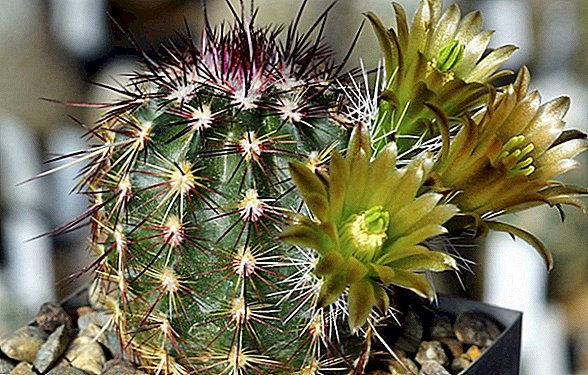
- Echinocactus Gruzoni - The spherical stem can grow up to 1 m in height and 50 cm in diameter. The ribs (20-35 pieces) are densely covered with white or golden hairs. Only old plants (older than 20 years old) bloom with large yellow flowers.

- Rainbow Echinocactus - spherical shape, height up to 50 cm, flowers of pink and purple hues up to 7.5 cm. It has brittle roots that should be considered when transplanting.

- Echinopsis - easy to grow, easily come to bloom. Stem spherical, cylindrical or columnar. Flowers oblong in the form of a funnel bloom at night. Echinopsis often used as technical plants as rootstocks.

- Ferocactus - spherical or oblate shape, large, hard spines. Easily overgrown with children, forming a whole colony-family. They bloom during the day when they grow up to 25 cm. The funnel-shaped flowers are pink, yellow or red at night.

- Mammillaria - small plants (up to 30 cm), spherical, without ribs. The flowers are tubular or bell shaped, blooming in a circle on top of the stem. The main difference from other species is the presence of papillae, from which spines grow, and buds appear in the sinuses.

- Notocactus - spherical shape over time is drawn out. Stem closer to tuberculate than ribbed. Large flowers of various colors - orange, yellow, red, pink. Does not give side shoots.

- Prickly pear - varied in shape and color of flowers - yellow, orange, red, pink. The presence of glochidia requires caution when leaving. Easily gives shoots, often appearing in the most unexpected places.
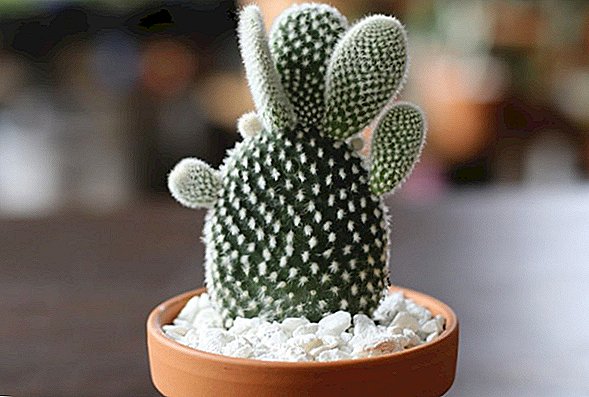
- Schlumbergera or Rozhdestvennik (Holiday Cactus) - the plant lives up to its name and blooms in winter (another variety - Ripsalidopsis or "Easter egg" blooms in spring). Stems in the form of drooping shoots can be grown as an ampelous plant. The flowers are varied in color, up to 8 cm.

Did you know? Echinocactus Gruzoni can reach the age of 600 years and is considered to be a long-lived.
How to care for the cactus at home?
With proper care, indoor cacti can be a wonderful element of home decor. They have long ceased to be exotic and feel great in home collections.
Any kind of cacti is interesting and unique in its own way, and the right care will give a lot of amazing discoveries. For all its simplicity plants depend on growing conditions. And the main thing is to create conditions corresponding to the natural growth environment and life cycle.
Plants have rest periods and periods of active growth that are shorter than sleeping periods. The setting of buds in flowering species occurs 3-6 weeks after leaving the state of rest. Cacti bloom, usually in May-June.  Not all types of cacti are suitable for home cultivation - some simply do not fit in the room, and some are poisonous, some have antiseptic properties, some are hallucinogenic.
Not all types of cacti are suitable for home cultivation - some simply do not fit in the room, and some are poisonous, some have antiseptic properties, some are hallucinogenic.
Read more with a list of cacti for home breeding.
Accommodation
The optimal place to place a cactus is chosen not for decorative reasons, but on the basis of the needs of the plant.
Important! With intense sunlight, the cactus stalk becomes reddish. This is a "tan" and the defect is temporary.Thermophilic and light-loving plants of desert regions should be located in such places - these are windows of the south, southwest, southeast side or greenhouse.
 Plants similar to deciduous species, although they require a lot of heat and light, but will not tolerate direct sunlight at noon, you will need shading or diffused light. And the species blooming in wintertime are best placed in a non-solar place. After a period of rest, cacti are brought out into the sun gradually. This is the hardening of a plant that has lost the habit of sunshine during the winter With a lack of lighting, illumination with phytolamps is needed. Some cacti lean in the direction of light, but you should not change the position of the flowerpot - species sensitive to changing places can discard flowers and stems.
Plants similar to deciduous species, although they require a lot of heat and light, but will not tolerate direct sunlight at noon, you will need shading or diffused light. And the species blooming in wintertime are best placed in a non-solar place. After a period of rest, cacti are brought out into the sun gradually. This is the hardening of a plant that has lost the habit of sunshine during the winter With a lack of lighting, illumination with phytolamps is needed. Some cacti lean in the direction of light, but you should not change the position of the flowerpot - species sensitive to changing places can discard flowers and stems.Air temperature and humidity
Water reserves in cacti not only save the plants in the heat, providing moisture, but also help to transfer the differences in day and night temperatures in natural conditions. Large species can tolerate even minor frosts. But most species are very sensitive to a decrease in temperature and die when it approaches zero. At home, it is desirable to provide the following temperature regime:
- rest period - lower the temperature to + 12 ... + 15 ° C, frost-resistant species can winter at + 5 ° C, preferably in a cool place away from artificial heating;
- period of active growth - the temperature is maintained within + 26 ... + 31 ° C, but desert species will withstand and + 35 ... + 40 ° C.
Important! Cacti can not be sprayed in the summer in hot weather (except Kleystokaktus).Cacti, whose generations have grown and developed at home for a long time, are less dependent on temperature patterns than their wild relatives.
Cacti require moderate air humidity, regular ventilation without drafts, and light sprays in the form of fog in the morning. Spray water should be warm - + 30 ... + 35 ° C.
Watering
Like all succulents, cacti are able to store a large amount of moisture and hold out for a long time without watering. But they still need to replenish water.
Read more about how to water cacti.
Watering is carried out rare, but abundant, waiting for the passage of water through the drainage holes and freeing the pan. The accumulated water can cause root rot. Watering is repeated only after drying earthy coma. Irrigation method - top along the edge of the pot or into the pan.  Water should be soft settled room temperature can be heated in the sun.
Water should be soft settled room temperature can be heated in the sun.
For desert species detrimental overmoistening in cool weather, but the stagnation of water in the soil will lead to death in the heat. Species with leafy traits will carry abundant watering.
Did you know? The amount of stored moisture in the stem is 96%, and even in drought does not fall below 60%.
Top dressing
Undemanding cacti require nutrients, although to a lesser extent than other plants. Fertilizers can be used for fertilizing only in the period of active growth starting from March. In the initial growing season - twice a week, in the future - no more than once a month.
The easiest way is to buy ready-made mineral fertilizers for cacti and strictly observe concentration. For self-prepared mixture use a mixture with a high content of phosphorus and potassium, and less - nitrogen (38% potassium, 16% phosphorus and 5.6% nitrogen).
Video: Feed for succulents When the plants are ready to bloom, fertilize with potassium phosphate. Top dressing is carried out only after the soil is moistened or together with the next watering. Any mixtures are used in low concentrations - no more than 1 g per 1 liter of water. Properly conducted top dressings make it possible to transplant plants less often (once in 4-5 years).
Do not apply fertilizer:
- during the winter period of rest or in the summer heat;
- with root damage;
- after transplanting and rooting.
Transfer
House cactus is transplanted no more than once every two years, some species characterized by slow growth, even less often - once in 5-6 years.  The substrate for cacti should be light, loose and contain large particles, which contributes to moisture and air permeability. You can use the purchase mix for cacti or make the soil yourself by mixing equally soddy soil and coarse sand. Some of the sand can be replaced with rubble, pebbles, or gravel.
The substrate for cacti should be light, loose and contain large particles, which contributes to moisture and air permeability. You can use the purchase mix for cacti or make the soil yourself by mixing equally soddy soil and coarse sand. Some of the sand can be replaced with rubble, pebbles, or gravel.
Important! To make the cactus blossom, cultivation is carried out in a smaller pot. - It stimulates the flowering of cactus.Choose a pot slightly larger than the previous and higher root system by 15% in order to avoid rotting of the roots.
Transplantation is carried out in the spring:
- Before planting a few days do not water the plant for better extraction of the roots.
- At the bottom of the pot stack drainage of expanded clay, broken bricks without dust or pebbles.
- The pot is filled with soil for a third, and the plant is placed in the center, gently straightening the roots. Sprinkle with the rest of the soil to the root collar.
- It is desirable to powder a root neck with clean sand or small pebbles.
- After transplanting, they water it in a few days and do not fertilize it.
How to multiply at home
Cactus propagates vegetatively, cuttings and seeds during the period of active growth in the spring or early summer.
The main method of reproduction - sowing seeds. Before sowing, the seeds must be treated with ethyl alcohol (the solution of potassium permanganate does not penetrate through a solid shell). Seeds scatter on the surface or slightly pressed.  Shoots of desert cacti appear at a temperature of + 25 ... + 35 ° C, other species need a temperature of + 16 ... + 18 ° C. To create the required humidity, thermal conditions and lighting will allow the film or glass on top of the tank with constant ventilation and moistening.
Shoots of desert cacti appear at a temperature of + 25 ... + 35 ° C, other species need a temperature of + 16 ... + 18 ° C. To create the required humidity, thermal conditions and lighting will allow the film or glass on top of the tank with constant ventilation and moistening.
Read more about the proper sowing of cactus seeds.
The first shoots appear after 10 days, but it will take a month to fully germinate all the seeds.
Vegetative reproduction occurs by separating the shoots from the main maternal plant, lateral root shoots or leaf. They take root easily and continue to develop as an adult plant.  The grafting is carried out during the formation in the areola or on the roots of the processes, sometimes with rudimentary roots. The processes are separated and rooted, growing as a separate plant.
The grafting is carried out during the formation in the areola or on the roots of the processes, sometimes with rudimentary roots. The processes are separated and rooted, growing as a separate plant.
Did you know? The safety of the seeds of some species of cacti is 30 years.Not many plants can boast a successful combination of variety and ease of care. With the help of cacti, you can make an excellent picture in your home collection, so great is their difference in shape, color of flowers, type of thorns. Научившись определять вид и обеспечив правильный уход, вы получите интересное и плодотворное хобби.

















